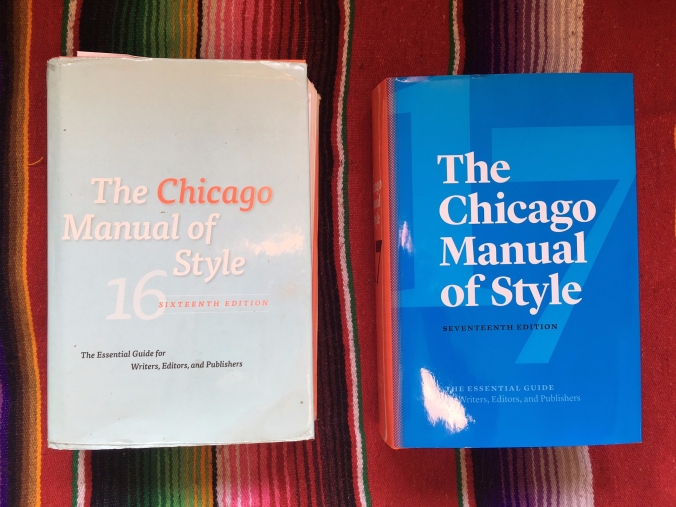
Every seven years, The University of Chicago Press releases a new edition of The Chicago Manual of Style. As it says on the cover, it is the essential guide for writers, editors, and publishers. When I edit a client’s book, this manual is my bible. It’s how I decide where and how to place every period, ellipsis point, italicized letter, hyphen, and en dash. My copy of the new edition came in the mail last night. I have feelings about this.
This is the third edition during my career. The fifteenth edition I only had for a few years, but the sixteenth and I were together for the full seven. That’s almost one-fifth of my lifetime. When it came out, I had only recently met the man who became my husband, and I was still in my twenties (cough). I was a different person with a different life. Now that I’ve gotten to hold the new edition and flip through its pages, I realize how worn the sixteenth had become. The binding is loose. The pages are dog-eared. The dustcover is faded. But the aging was earned. I haven’t kept exact count, but it has helped me copy edit and proofread hundreds books—even a couple of best sellers.
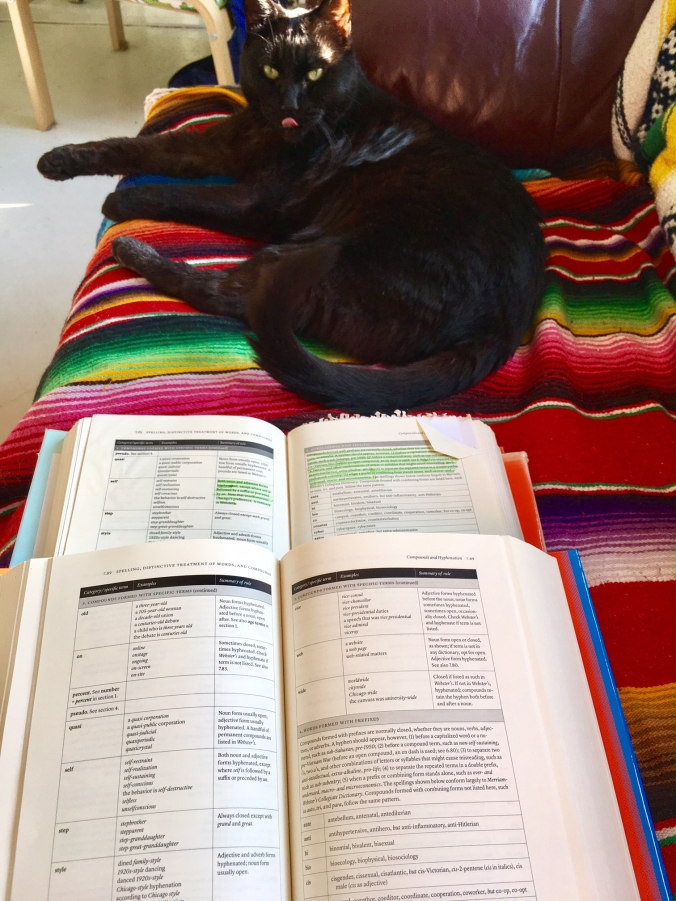
To be honest, what I’m going to miss most is all of the highlighting. (That’s my cat, Gene Vincent, in the background. He was “helping” me as I took the photo. He’s “helping” me as I write this, too.)
So I thought it fitting to take some time today to memorialize my copy of sixteenth edition of The Chicago Manual of Style. My copy, in many ways, became like a family bible. My mother and grandmother would stick odds and ends in their bibles–usually papers from funeral and wedding ceremonies—bits that represented important moments in the lives of their loved ones. Mine’s not quite like that, but I do use a piece of the edging of my baby blanket as a bookmark.

This marked the page that explained how to write how tall a person is. I can never remember whether to write “feet” or “foot.”
And I found a flower I had pressed from my mother’s garden in Ohio, plucked during one of my trips home when I had planned a visit but I also, inconveniently, had a deadline.
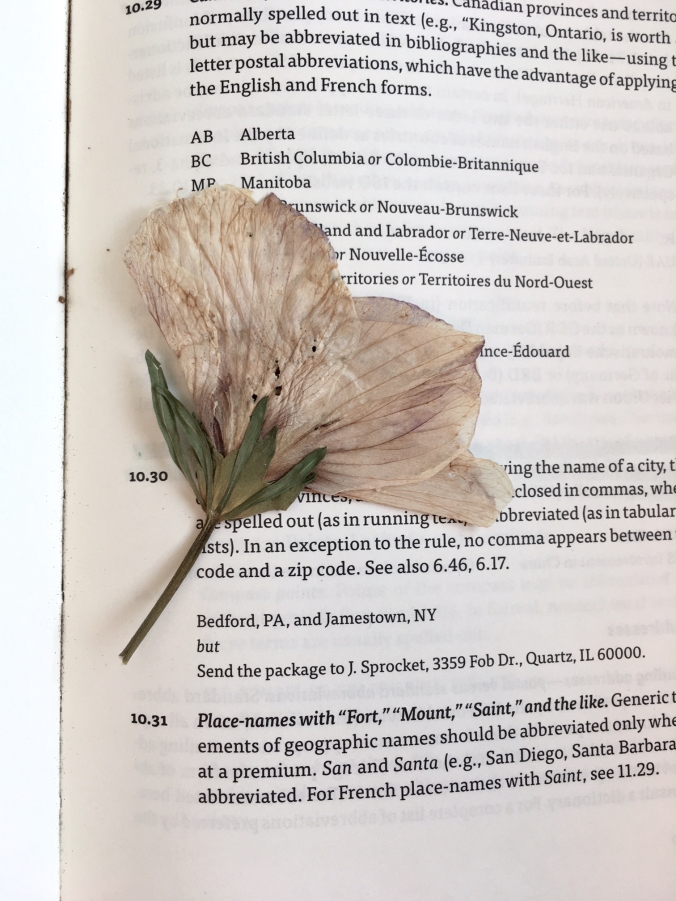
The sixteenth edition was also my external brain, holding all of the detailed information I wasn’t able to remember. And I see how I would use anything I had handy to underline and highlight so I could find the answer more easily next time.
Sometimes I actually had a highlighter.
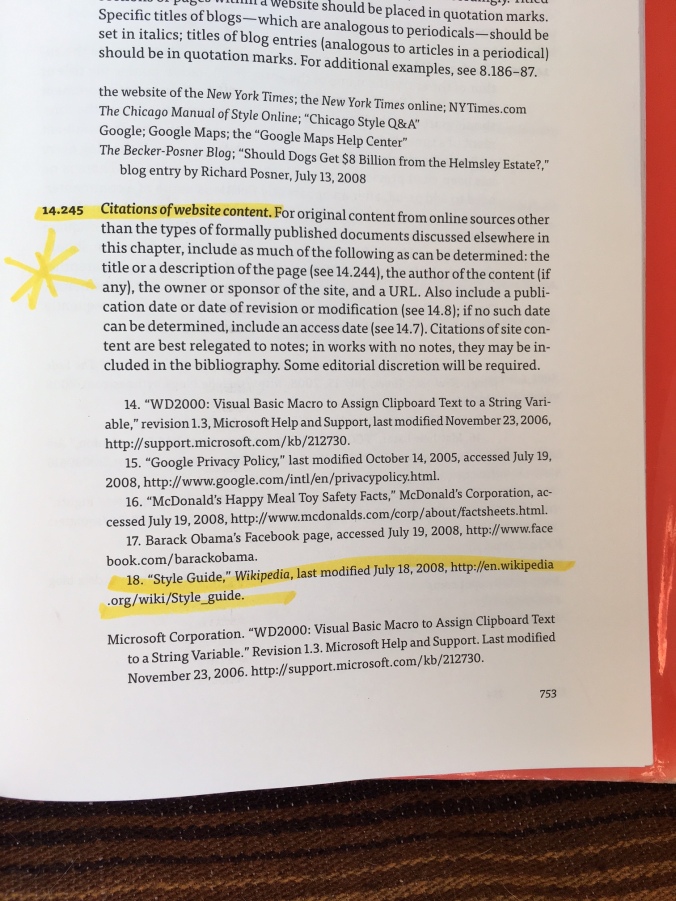
But other times it was a humble pen I used.

This must have been a rough day. I’m a black ink gal. I imagine I would only use blue in an emergency. A quotation mark emergency this must have been then. We editors can have those.
Apologies to all of the librarians out there (including my mom), but there were times necessity called for me to bend the corners of a page, in hopes the next time I could flip right to that section without consulting the index.
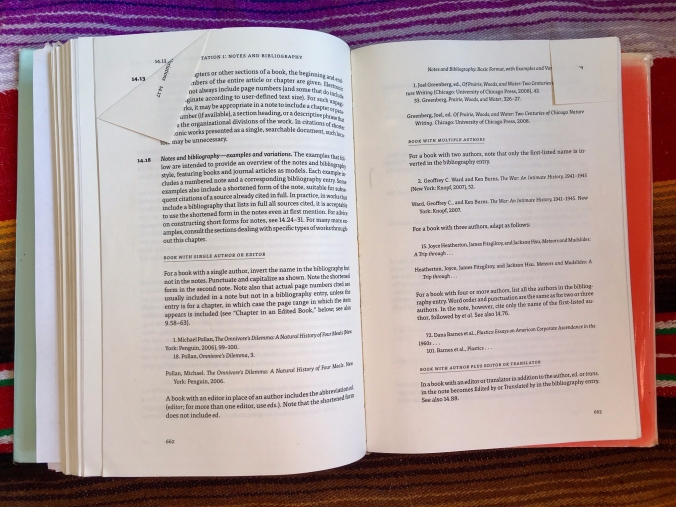
Bibliography information. What you can’t see in this photo are the faded tear stains on the pages. But a bibliography, when it is formatted correctly and, mostly importantly, finished, is a beautiful thing.
When the seventeenth came in the mail, I was surprised how emotional I was about it. The sixteenth and I had a good ride. (And the highlighting! Oh that beautiful neon ink…how I will miss you.) But I understand our time has come to an end, and I know one day, when it is properly highlighted, the seventeenth will be as good to me, as helpful, and as referential as the sixteenth was.
When the eighteenth edition comes out. I will be forty years old. I imagine my life will be different, just as it was different when the sixteenth was released. What I hope will be the same, though, is that I will be editing books that I love and helping authors reach their dreams—and inserting every missing serial comma along the way.
I loved reading this, it’s a great and very inspirational post.
LikeLike
Hoo-yah!
LikeLike
Excellent. Gregory Chandler
LikeLike
Releasing new versions “every seven years” is only true lately. About once a decade was the rule for a long time. The eleventh edition lasted twenty years! I feel like the recent release of two revisions within only fourteen years was mostly to increase revenue. I thought Chicago 16 was poorly done and didn’t upgrade. Totally understand getting attached to a well-worn copy, though.
LikeLike